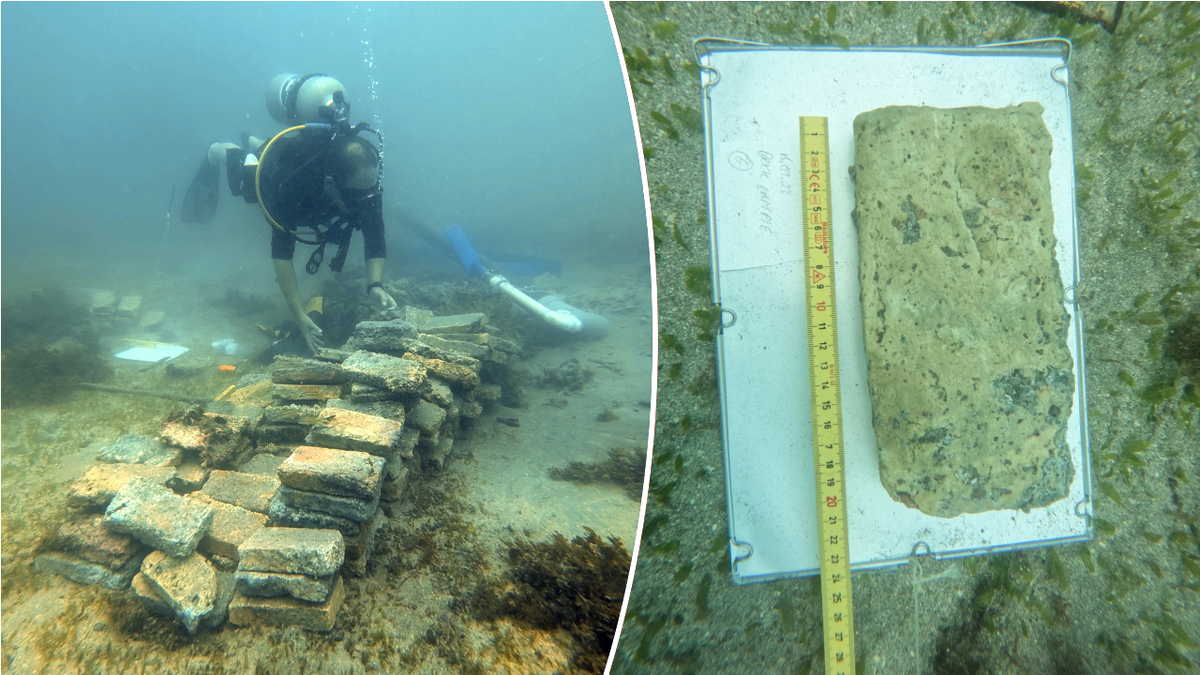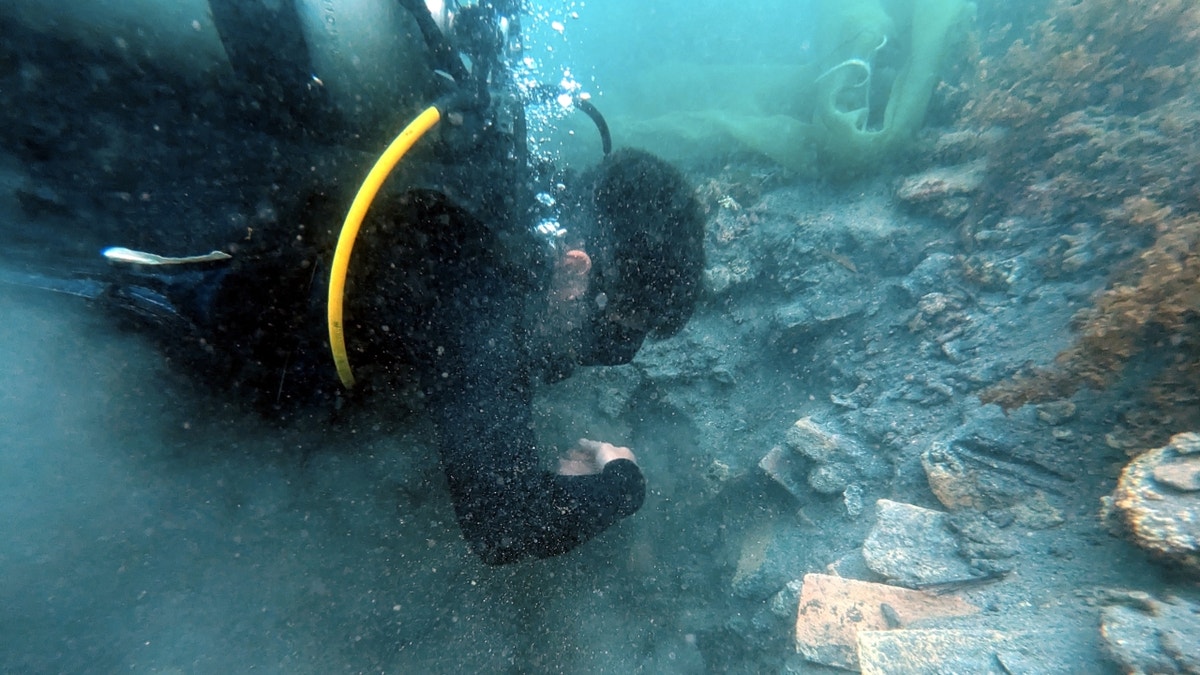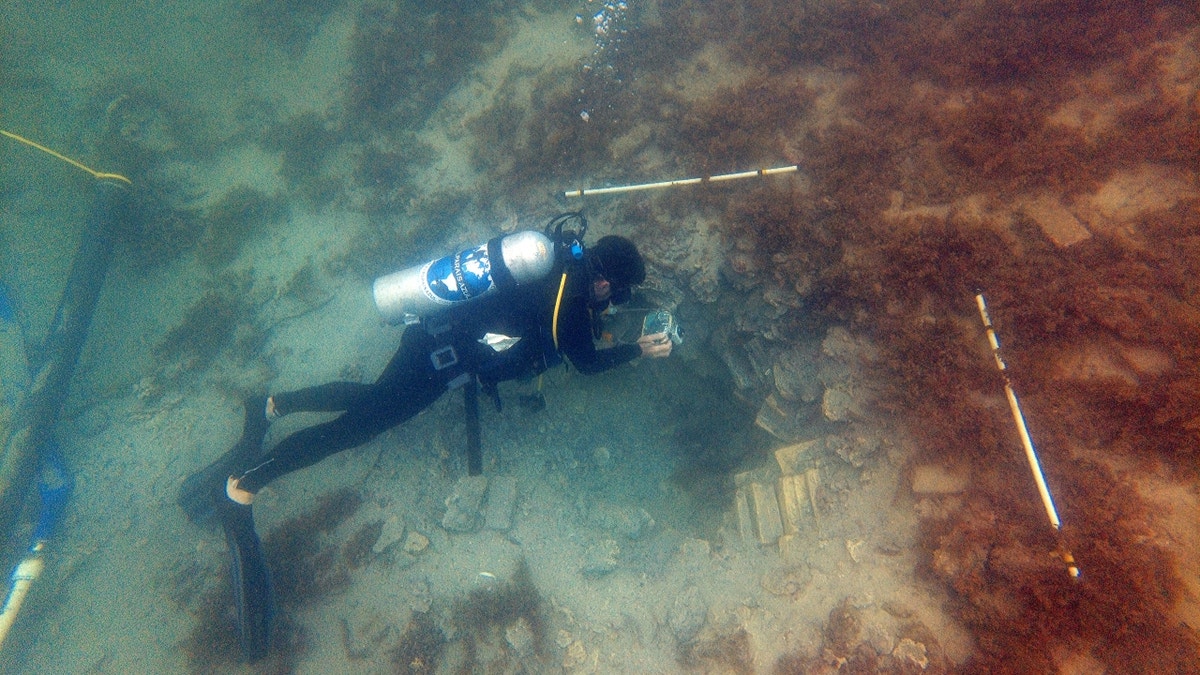Archaeologists have recently discovered a shocking: They found that two 18th century ships on the coast of Central America were actually two Danish slave ships.
The ships, namely Fredericus Quartus and Cristianus Quintus, are located in the shallow water of the Costa Rica Kahuita National Park. According to the National Museum in Denmark, the 1810 -century ships were shipped in 1810.
“The Friednicus Quartus was shining, while the Christians quintus anchor rope was cut, then the ship was wasted on the surf,” the museum’s press release mentioned. “It is not clear exactly where the ships were lost now.”
Rare 4,000 years old musical instrument ‘buried on the ground’ archaeologists puzzle
Divers in the picture caution show the ship breaking, which shows significant erosion signs from the last 315 years.
Although the ships were excavated in 2023, researchers did not know that they were a slave ship recently. The ships were believed to be a pirate ship for a long time.
Diverses recently unveiled the results from two Danish Das ships, Ferricus Quartus and Christianus Quintus. The ships were believed to be a pirate ship for a long time. (Zakob Aloing / National Museum of Denmark)
The excavation involves, in part, the yellow brick that was part of the cargo cargo in addition to taking samples from the woods of the vessels.
Researchers also conducted dendocronological analysis to determine where the wood came from-Tree-Ring Dating-. They found that it came from northern Europe.
“The Timbles are generated in the western part of the Baltic Sea, a region that includes the northeastern German province McClenberg, including Schleswig-Holstein, Denmark and Scania-and the tree was cut some time in 1690-1695 years,” the notification said.
The long-haired capital of ancient civilization can be exposed in the end, archaeologists say: ‘Unique Find’
“Wood is, besides, the crooked and the suit, which confirms what the historical tihassic sources say about the shining of a ship.”
Divers’ also found earthen pipes, which describes the museum as “common, Dutch-exposed pipes that were used on the Danish ship.”
“It provides two pieces that are missing” ”
“The size, shape and patterns of the pipes suggest that they were produced in the period before the ships were destroyed in 1710,” added to the press notice. “The clay pipes were rarely used for more than five years.”
For further lifestyle articles, see FoxNews.com/Lifestyle
The great yellow bricks that were survived in the picture also showed that “for use in Denmark and in the 18th and 19th century Danish colonies”.

Researchers have found that yellow clay bricks come from Denmark from the ship. (Zakob Aloing / National Museum of Denmark)
“In other European countries, other types of bricks and stones were in fashion when building new buildings,” the museum said.
The statement also said, “The clay came from Denmark – quite specially, from Eler’s Strand or eleven,” added to the statement.
“Both locations are located by Fajrurg Fajrr, which was the home of a huge brick manufacturing industry in the 18th century.”
Click here to sign up for our lifestyle newsletter
After analyzing the samples from the National Museum in Denmark and the National Museum at the University of South Denmark, researchers have proven what the historical Tihasic sources are about the history of the ships.
David Gregory, a marine archaeologist at the National Museum of Denmark, said that the results fits “perfectly” with historical tihassical details about a ship burning.

Archaeologists conducted wood-development analysis on the remains of shipwreck to determine their age. (Jacob Aloing / National Museum of Denmark)
Gregory said, “The analyzes are extremely confident and we have no doubt that they are the ruins of the Danish slave ships,” Gregory said.
“The bricks are the same in the case of Danish and it is also the same in the wood, which is excessively splashing from the fire. It fits perfectly with historical tihassic details that a ship burned.”
“We have no doubt that these are the ruins of two slaves of Danish.”
Denmark’s National Museum Marine Archaeologist Andreas Calmier Bloch says he was shocked to see the results “close to leave” during the long research process.
Bach said, “This is undoubtedly the Crazyist Archaeological excavation I am still part of.”

Danish researchers are now convinced that there were two slave ships at one time. (John Fahar Enzedal Nissen / National Museum of Denmark)
“This is not only important for the local population, it is one of the most dramatic ships in the history of Denmark because and now we know exactly where it happened.”
“It provides two pieces of missing from the history of Denmark.”
Click here to get Fox News app
Fox News Digital reached the National Museum in Denmark for additional information.
Leave a Reply